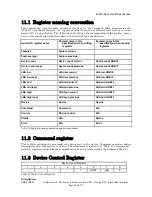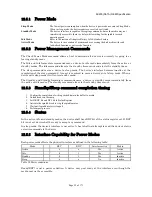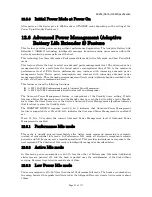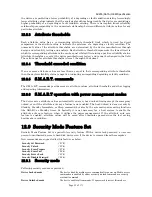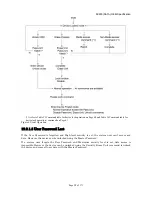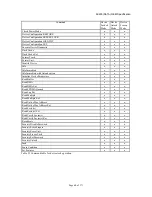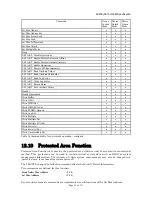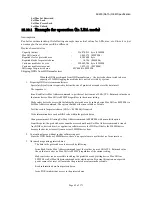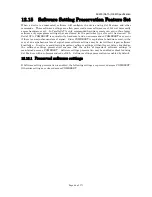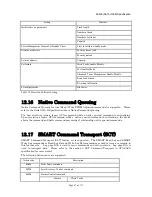
5K250 (SATA) OEM Specification
Page 54 of 171
12.6.4
Transition Time
The transition time is dynamically managed by users recent access pattern, instead of fixed times.
The ABLE-3 algorithm monitors the interval between commands instead of the command frequency
of ABLE-2. The algorithm supposes that next command will come with the same command interval
distribution as the previous access pattern. The algorithm calculates the expected average saving
energy and response delay for next command in several transition time case based on this
assumption. And it selects the most effective transition time with the condition that the calculated
response delay is shorter than the value calculated from the specified level by Set Feature Enable
Advanced Power Management command.
The optimal time to enter Active Idle mode is variable depending on the users recent behavior. It is
not possible to achieve the same level of Power savings with a fixed entry time into Active Idle
because every users data and access pattern is different. The optimum entry time changes over time.
The same algorithm works for entering into Low Power Idle mode and Standby mode, which
consumes less power but need more recovery time switching from this mode to Active mode.
12.7
Interface Power Management Mode
(Slumber and Partial)
Interface Power Management Mode is supported by both Device-initiated interface power
management and Host-initiated interface power management. Please refer to the Serial ATA
Specification about Power Management Mode.
12.8
S.M.A.R.T. Function
The intent of Self-monitoring, analysis and reporting technology (S.M.A.R.T) is to protect user data
and prevent unscheduled system downtime that may be caused by predictable degradation and/or
fault of the device. By monitoring and storing critical performance and calibration parameters,
S.M.A.R.T devices employ sophisticated data analysis algorithms to predict the likelihood of
near-term degradation or fault condition. By alerting the host system of a negative reliability status
condition, the host system can warn the user of the impending risk of a data loss and advise the user
of appropriate action.
Since S.M.A.R.T. utilizes the internal device microprocessor and other device resources, there may
be some small overhead associated with its operation. However, special care has been taken in the
design of the S.M.A.R.T. algorithms to minimize the impact to host system performance. Actual
impact of S.M.A.R.T. overhead is dependent on the specific device design and the usage patterns of
the host system. To further ensure minimal impact to the user, S.M.A.R.T. capable devices are
shipped from the device manufacturer’s factory with the S.M.A.R.T. feature disabled. S.M.A.R.T.
capable devices can be enabled by the system OEMs at time of system integration or in the field by
aftermarket products.
12.8.1
Attributes
Attributes are the specific performance or calibration parameters that are used in analyzing the
status of the device. Attributes are selected by the device manufacturer based on that attribute’s
ability to contribute to the prediction of degrading or faulty conditions for that particular device. The
specific set of attributes being used and the identity of these attributes is vendor specific and
proprietary.
12.8.2
Attribute values
Attribute values are used to represent the relative reliability of individual performance or
calibration attributes. Higher attribute values indicate that the analysis algorithms being used by





